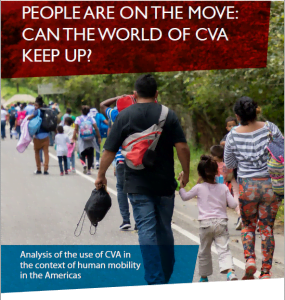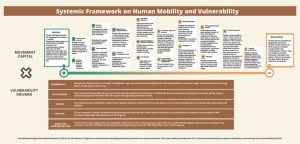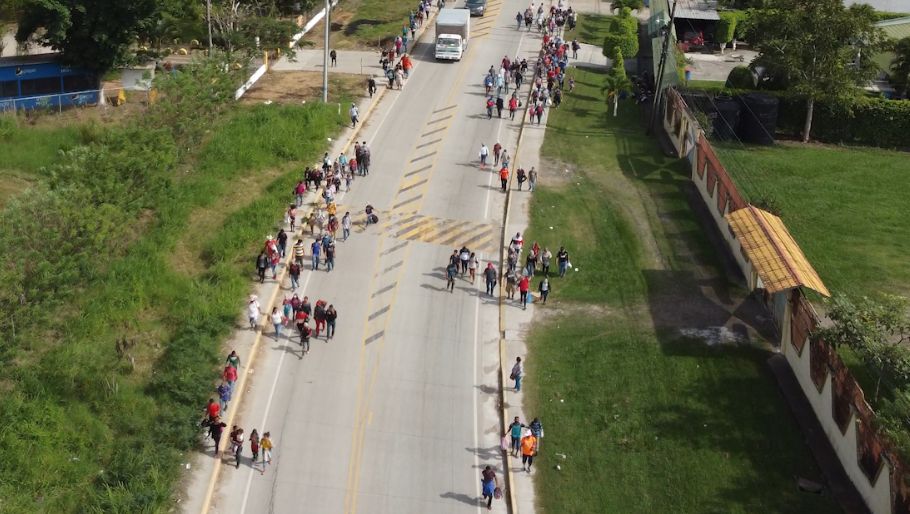This is not a drill
Sooner than we think, many parts of the world will be uninhabitable due to weather-related events. Weather patterns will be scrambled and hard to predict: one year of heat and drought, the next, flooding. Changes in the environment will cause shifts in global power. This will generate instability and conflict, resulting in massive population movements. Humanitarian assistance will be needed at an unprecedented scale. In this world, people will also demand better quality humanitarian support and will want choice. Increasingly, services will be delivered by commercial companies.
You may not agree with all that’s in this scenario, but some of it is already unfolding – we need to be prepared.
Latin America and the Caribbean is a fertile place to start reinventing the future. The region is already experiencing complex patterns of human movement and, while there is currently a healthy volume of Cash and Voucher Assistance (CVA), overall humanitarian funding is scarce. It is also a region with a long history of national social protection systems and one with a culturally ingrained ability to find creative ways of adapting.
 Against this backdrop, the CALP Network commissioned a study to examine the use of humanitarian CVA in the light of the latest thinking on human mobility. We landed on three key ‘aha!’ moments.
Against this backdrop, the CALP Network commissioned a study to examine the use of humanitarian CVA in the light of the latest thinking on human mobility. We landed on three key ‘aha!’ moments.
Movement does not equal vulnerability
Movement itself does not generate vulnerability. Rather, vulnerability is generated when motility-the ability to move- connects with other factors such as demographics, motivations, routes, the ease of movement, and what happens at the destination point.
Exploring this reality signals various prompts that can make the design of programs more effective from the point of view of the person who moves. For example, CVA that makes people wait for registration or wait for the receipt of a second payment, makes the journey more difficult and lowers people’s motility.
Motility is capital that is unequally distributed
In Latin America and the Caribbean, and probably most places in the world, the vulnerability of people on the move is linked to inequality; this inequality is exacerbated in crisis.

We can address vulnerability by acting early, we don’t have to wait until people are on the move. There are needs that can be addressed which have immediate benefits and can make journeys easier when needed. With this lens, the need for humanitarians to work with certain types of vulnerability such as birth registrations becomes more pressing – the registrations are usually beneficial in any situation and make things smoother if people decide, or are forced, to move.
Seeing the ability to move as a type of capital makes it possible to understand human mobility as something positive. Framing things in this way should help agencies and donors discuss the political elements of people on the move more openly.
More open discussions of the politics related to motility is vital, as it allows humanitarian agencies and donors to consider all options and see how CVA can be used to its full potential e.g., using CVA before and during a journey, as well as when people reach a destination.
Motility is capital – it can be exchanged for other forms of capital
The capacity to move can translate into work and an ability to make social connections outside one’s own place of origin. Changing the lens, again, this can move us from thinking negatively about people on the move to one of movement being about resilience. From this point of view, the fungibility of money should make CVA the ideal instrument for providing aid that could result in a multiplication of wellbeing by increasing people’s ability to move safely.
So, what next?
The complexity and fluidity of human movement patterns, particularly evident in Latin America and the Caribbean, challenge the traditional structures of the humanitarian system and what we think is possible. The study ‘People Are on the Move: Can the World of CVA Keep Up??’ opens more questions than it answers. It shows that generalized CVA is practical for the humanitarian agencies and their donors, but often falls short on delivering on the potential that cash transfers could deliver if we think about and respond to the specific and diverse situations of recipients.
Responding to the humanitarian need of people on the move already poses huge challenges. Extreme weather events around the world are giving us a window into how some of us will suffer through the fast-approaching future climate. Sadly, we can expect that there will be an increasing number of people moving – because they have to, not because they want to.
There are big questions ahead. Dive into the report and let’s talk. It is time to think big and make changes as ambitious as the problems vulnerable people face.
If you are interested in this topic, do not miss our upcoming event “CVA for people on the move: Time for a new vision?”, that will take place on 13 October 2022, where we will answer your questions about this topic and share the key findings of our recent study “People are on the move: can the world of CVA keep up?”.
Main image: The Red Cross is preparing to provide humanitarian assistance to migrants ready to depart Honduras for Guatemala as part of a ‘migrant caravan’. ©Johannes Chinchilla/IFRC. 1st January 2010.
About the author
Paula Gil Baizan is a systems innovation expert and the Director of SomethingMeaningful Consulting, a coachsulting practice for leaders and organizations designing for big change. She was the researcher and author on “People Are on the Move: Can the World of CVA Keep Up?: Analysis of the use of CVA in the context of human Mobility in the Americas a study commissioned by the CALP Network.




